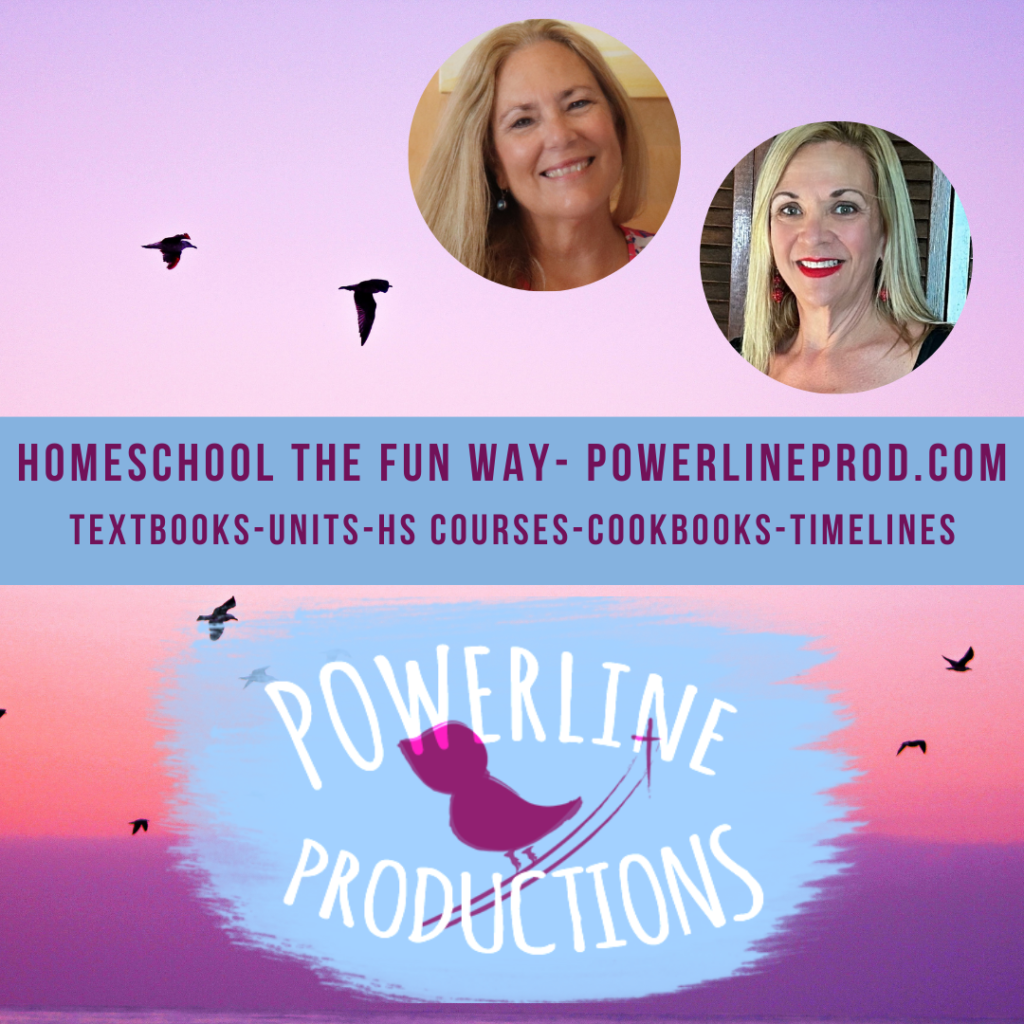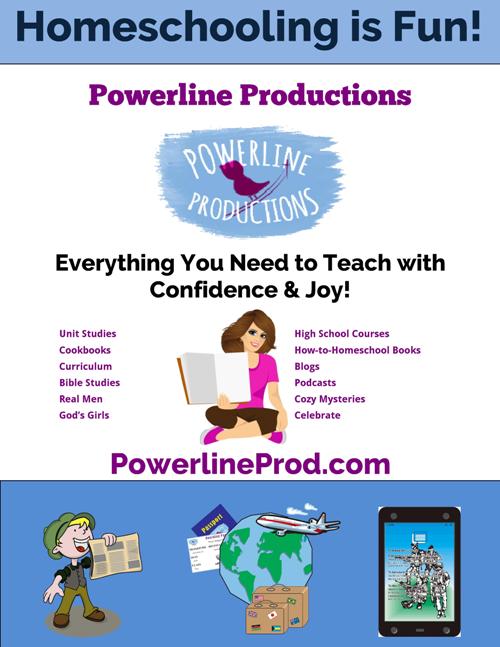Reading:
This is probably the easiest class to do as a family. You can hand out an age appropriate book to each child and have them read it. But let’s go a little farther. Your high schoolers need extra time to read quietly alone, because their books are longer and take more time to read. Give them time in a quiet room to do this. While they are working on their books, have reading aloud time with the others. During this time it doesn’t really matter what books you are reading. You could have your older kids reading their chapter books out loud to the family. You could have your new reader go through their picture books. It’s best if everybody takes a turn. It may not be possible for everybody to have a turn every day, but each week, each person gets at least one turn to read aloud. Have a discussion time after reading the passages out loud. Talk about what went on in the story. Talk about what went before this chapter, if you hadn’t read it to the group. Talk about what you think will happen next. Talk about what the characters were feeling. Have your high schoolers tell the family something about what they are reading too. Discussing the story will help everybody with their reading retention, and isn’t that the main point?
But, don’t always leave your highschoolers out! Have time that you read together as a family even if it’s only fifteen minutes a day. It could be the Bible or a devotional book or a story that you are plodding through slowly. In the Curtis home, history is often read aloud together—even in high school.
Phonics:
If you are teaching phonics, then you will need uninterrupted time alone with your phonics student. I like to teach phonics while the other children are quietly doing math. Usually, we can get a few math pages done and our phonics lesson while the big kids are finishing a lesson in math. If not, we do phonics while the other children are working independently.
Math:
This subject is taught sequentially so it is one of the trickiest subjects to integrate. It is very important that homeschool parents are involved in their children’s math lessons. I have talked about this before. Parents need to give individual attention to each student, each day, to teach them new math lessons and correct mistakes from the last lesson. I begin with the oldest because their lessons are most complicated and usually take the longest to work through. While you work with one child have the other children do their own work, or work with their siblings on drills and fundamental skills. When you finish with one student, start them on their assignment and move on to the next student. If the older students finish their work before you have finished helping all the others, they can return to doing drills with the little ones, work on something else, or take a break.
Math Drills for the Whole Family:
Three very important skills are frequently neglected and would make each subsequent math class easier if mastered. They are “making 10”, multiplication, and fractions. Every math student should memorize the addition facts that add up to 10. We call this “making 10” (i.e. 1+9-10, 4+6=10). This is a skill that can be taught in kindergarten so all of your children can work together practicing this. Children start learning multiplication as early as first grade as well. If you get or make “flash cards”, children can do this together. They can make a game of it. And lastly they need to practice fractions. Many children have trouble with these and it haunts them throughout high school. Use manipulatives or household objects to demonstrate adding, subtracting, multiplying, and dividing fractions. Give them drill sheets to practice together.
Writing:
Every student should do something to study spelling, vocabulary, and grammar. This can be done using workbooks, lists compiled from their reading choices, lists compiled by teacher, or even songs. There are so many programs out there, it’s just a matter of finding the ones that you like to work with. These are just a beginning though. Students need to be writing good sentences, then good paragraphs, then good essays, and more. When they study words for spelling or vocabulary, they should be using these words in good sentences. When they study grammar, they should be applying the lessons by writing good sentences. Be sure to take a look at those grammar books and use them with your child to help them understand their mistakes. This helps them to realize the importance of their grammar book—it’s helping them learn to write well! The main differences between the grades is that there are more words and grammar rules the older you get. Sentences get longer. Paragraphs start being written. Essays turn into papers and books. These can be done all together as a family. Students should read aloud what they are writing. When the other children hear what their sibling are writing they can help each other improve. Sometimes reading aloud is all it takes for a writer to realize their own mistakes. Don’t skip this important step.
Older children might need to work in a quieter room while you help the younger children, but don’t forget to call them back to hear everyone’s paper.
Social Studies:
These are great subjects to bring all the ages together. We all love to learn about other people. All of these classes really boil down to stories about other people. If you are studying geography, look at maps teach everybody how to read them, then start talking about the climate in different areas. That leads into a discussion about how people live in those areas. You can look up all kinds of information about the animals and the peoples from any part of the world. Older kids can do more in depth research. You can use lapbooks with young children to guide them in research. You can have older children teach the younger ones from their research. All study of history works the same way. Read the stories, recite the dates, color maps, have fun. Let your younger children just enjoy the stories. Expect your older children to do extra research and memorize dates and important people. Look carefully for history books that come from a Christian perspective. If you can, get original documents or books written very close to the time described. Once you find good material you can really build a close family bond by studying history and geography together. Even the study of economics and government can be studied with younger children. Economics includes money and how it is used. Government includes self-government and family government. Even very young children care about these things. Include them.
If you have older children who work independently, then keep them up to date on what the little ones are doing. Combine everyone you can to read aloud. Most of all, talk about what you learned at the family dinner table. (This applies to other subjects too!) Make learning exciting by talking about it together—suddenly, learning is a lifestyle, not a few hours in the school day.
Sciences:
Like math, this needs to be taught sequentially once students are in high school. Before that happens they can all work together. The truth is that even some of the high school science work can be done with younger siblings. Before my kids started studying biology, we all worked together. It was exploration. We learned about botany by picking mushrooms and studying them, picking flowers and dissecting them. We learned about zoology by watching the animals in our yard, or watching videos about insects and animals.
Don’t get hung up on what book is appropriate for what age group. You are homeschooling! Don’t try to duplicate the public school! It is not in the Scriptures that you must teach certain things at certain times—if that is an issue for you, let it go! If you have children in 5 different ages groups have the older kids read the book with you and then teach the younger kids together. Even once my kids started studying biology and chemistry their younger siblings were included in the labs. They loved it! They may not have had the vocabulary lessons and the explanations given in the class but they could appreciate the activity. It was great watching the biology student show the younger ones the eggs in the frog they dissected! Even though only my physics student knew how to predict where the potato would land, all my kids LOVED the potato gun. Have fun with science, together.
Character:
It’s true that there are certain character issues that need to be addressed at certain ages, but most character lessons can be taught to any of us at any age. There are many bad character traits that people try to excuse as “just their personality” and there are other traits that we just don’t realize need work. That’s why we all need character class. The best manual for good character is the New Testament of the Bible. Jesus taught this subject better than anybody and Paul did a great job of following up his lessons with many more great ones. Don’t forget about the writers of Proverbs and Psalms. They covered many important character lessons as well. There are so many wonderful writers out there who offer summaries and expansion of the lessons taught by these great men. Get your whole family together and use one of these, or just use your Bible. Whatever you use, just do it.
A very simple way to do this with many ages would be to pick a scripture that deals with a character trait, like “love your neighbor as yourself.” Have the older children find more scriptures about the same topic. Jesus told the story about the Good Samaritan to demonstrate what a neighbor should do. Now have the younger children talk about ways they can be a good neighbor to each other or to the children they see at co-op, church, or wherever. As the week moves forward, continue to talk about being a good neighbor. Give each child a chance to encourage one other by telling when they say their sibling do well with this. We don’t what them to spend this time tattling on wrongdoers. Remember to “let no unwholesome talk” in these discussions. Maybe that should be the character lesson you start with. Spend about a week on the topic and have them memorize scripture too. Once you think they have the idea, move on to the next trait.
We created our own character classes as the kids got older to prepare our middle and high school kids to grow up to be responsible adults, spouses, and parents. They read books on having a devotional life, courtship, marriage, the Christian home, hospitality, friendship, and even homeschooling. We studied Scriptures related to practical topics. Don’t just roll your eyes and wish your children would change. Invest in them!
Bible:
In many ways this is most important subject you can teach. If you can raise your children to love the Word of God, you are truly going to raise great men and women. I’ve heard it said that if you aren’t reading the Word of God regularly, you can’t trust your own prayers. If you don’t read the Word, how do you know God’s heart? How do you even know Him? It tells us all we need to know about God. It is our manual. BIBLE spells “Basic Instructions Before Leaving Earth.” It’s cute, and catchy, and true. Don’t neglect this. Train your children to spend time reading their Bible on their own each morning before they begin school. If they can’t read yet, get them a picture Bible that you read to them and they can look at the pictures and remember the stories you read. The younger they make this a habit the sooner they will come to delight in spending this quiet time with the Lord.
A verse a day will not keep the devil away! By the time, children are in middle and high school, they should be spending a large chunk of time reading the Word of God. Help everyone in the family memorize Scripture too! Even Mom and Dad need to hide the Word in their heart so they will not sin against God and so they can grow closer to Jesus. God’s Word is alive! It changes us!
In addition to these quiet times, they need to study the Bible. The character lessons above give a pretty good model for one way to study the scriptures but there is so much more in the Word than just character lessons. Again there are many Bible study books available for sale. Make sure you use ones that come from a conservative, solid foundation. It won’t do any good to teach them liberal theology. If you don’t want to buy material, try doing an inductive Bible study. Take a scripture passage and read it. Then have everybody make OBSERVATIONS about it. Have one of the older kids (with neat handwriting) write all the observations on a white board or chalk board. Keep it obvious. Don’t read into anything at this point. Next write down INTERPRETATIONS. This is where people say, “I think.” Guide your children based on Biblical truths. This is where you talk about why these things are happening, what happened before this, and what this will lead to. Once you cover the scripture pretty well move on to the import APPLICATIONS. What good is all this discussion if they can’t use it in their life? Make sure everybody talks about how this works in their life, with their friends, and their responsibilities.
Until next time Happy Homeschooling!
Laura Nolette & Meredith Curtis
Pages: 1 2







